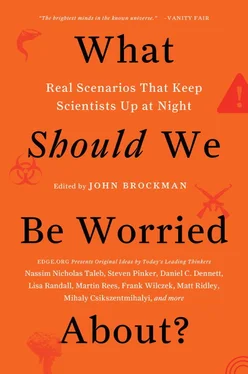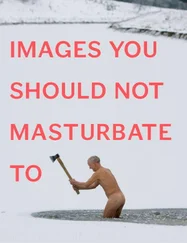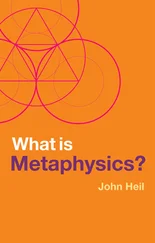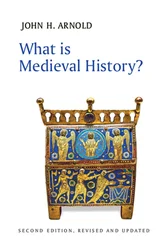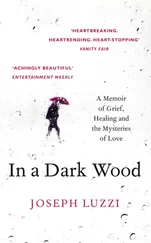Every time we blog, charge, debit, Tweet, Facebook, Google, Amazon, YouTube, LinkIn, Meetup, Foursquare, Yelp, Wikipedia, we leave electronic nuggets, some more visible than others, of who we are, whom we are with, and what we like or are interested in. In a sense, we electronically tattoo ourselves, our preferences, our lives, in a far more comprehensive and nuanced way than any inked skin. Trivially easy to apply, seemingly innocuous, initially painless, these frequent electronic tattoos are long-lasting and someday will portray you as an almost saint or a serious sinner or both. Electronic tattoos are trivially easy to copy, reproduce, spread, store. They will long outlive your body. So in a sense they begin to fulfill Borges’ greatest fear: They begin to make one immortal.
Tattoos are serious commitments. Every parent knows this. Often kids do not. Once inked, a tattoo is a lifelong commitment to a culture, cause, person, passion, hatred, or love. One cannot belong to certain tribes or gangs without a public billboard that promises till death do us part. Sometimes, once inked, there is no hiding, and it is hard, if not impossible, to change sides. Whether on a beach, bed, classroom, job, or cell, every pair of eyes judges and thinks it knows who you are, what you believe in, whom you play with. Tattoos publicly advertise fidelity, dedication, love, hate, and stupidity. That which, after a few tequilas in Vegas, may have seemed a symbol of never-ending romance can become a source of bitter conversation on the future honeymoon. Now multiply that embarrassment, disclosure, past history a thousandfold using electronic tattoos. (Type “high schoolers” into Google and the first four search hints to appear are “making out,” “grinding,” “in bikinis,” and “kissing.” Eventually, do you really want to see the detailed video of future grandma without gramps?)
Immortality and radical transparency have consequences. We are at immediate risk of having the world know what we do, what we did, ever more available for scrutiny by our peers, rivals, bosses, lovers, family, admirers, as well as random strangers. SceneTap cameras let you know, at any given minute, how many people are in dozens of Boston bars, the male/female ratio and average age. This will soon seem quaint. Facial-recognition technologies enable you, with a 90-percent-plus accuracy, to use a smartphone to identify someone standing at a bar. Add name recognition and location to your phone and likely you can quickly access a series of details on whether that cute person over there has any criminal convictions, where she lives, what her property is worth, how big a mortgage, Yelp preferences, Google profile, Facebook status, Tweets, reunion notes….
These overall records of our lives will be visible, accessible, hard to erase for a long, long time. It’s so painless, so easy, cheap, and trivial to add yet another digital tat to our already very colorful and data-filled electronic skin that we rarely think about what it might mean, teach, say about us in the long term. So we have covered our bodies, our images, ourselves in far more detail than even the most tattooed person on the planet.
And even if you acted impeccably according to today’s norms and customs, electronic immortality still presents enormous challenges. Religions, ethics, customs, and likes change. What is currently deemed simply distasteful may be judged quite differently by successor generations: Knowing vaguely that great Greek philosophers sexually consorted with young boys is different from having direct access to lurid tapes during history class. Detailed visuals on how the Founding Fathers treated their slaves might seriously affect their credibility. Today’s genetics has already uncovered and detailed Thomas Jefferson’s peccadilloes. Were today’s technologies and detailed histories available a few centuries ago, likely we would have far fewer recognized saints. No doubt some things we do as a matter of course today will seem rude, barbaric, or even criminal to classrooms full of future high schoolers trolling through huge databases of lives.
NICHOLAS HUMPHREY
Darwin College, University of Cambridge; author, Soul Dust: The Magic of Consciousness
In 1867, Dostoevsky, on a visit to the cathedral in Basel, was transfixed by Holbein’s portrait of the dead Christ. According to his wife’s diary, he climbed on a chair to look more closely at the painting and remained for a good half hour, taking in every detail. Two years later, in his novel The Idiot , he was able to give an uncannily accurate description of the painting, as if he had photographed it in his mind.
In 2013, of course we would not need to go to such trouble. We could snap the painting on an iPhone, and summon it up later on the Retinex display. Actually, we wouldn’t have to visit Basel. We could check it out on Google Images back home. And while we’re at it, we would only have to type in “Dostoevsky + Holbein” to find this anecdote confirmed at a dozen sites.
One-touch knowledge can be an enormous boon. Yet I worry that in raising us all to a plane of unprecedented genius, it is creating a drearily level playing field. When each of us can learn so much, so easily, in the same way as everybody else, we are in danger of becoming mere knowledge tourists, hopping from attraction to attraction at 30,000 feet without respecting the ground that lies between. One-step travel is a boon as well. But when everyone finds themselves going to the same places, when it’s the arrival and not the journey that matters, when nothing memorable happens along on the way, I worry that we end up, despite our extraordinary range of experience, with less to say.
In the old days, when, like Dostoevsky, we had to work at it, the learning we accumulated, however eccentrically, was both valued and valenced. The landscape of our knowledge had mountains and valleys, flat sands and gushing geysers. Some parts of this territory we had explored for ourselves, others we were guided to and paid for, others we might have chanced on by luck. But however we came by them, we were proud to know the things we did. They were the presents we brought to the table of intellectual debate. In argument we could reveal them when and if we chose, we could put everything out front, we could pretend ignorance, and play hard to get.
We should worry that this dimension of individual intelligence is disappearing, and with it that flirtatiousness that leads to the marriage of ideas. Soon no one will be more or less knowledgeable than anyone else. But it will be knowledge without shading to it, and, like the universal beauty that comes from cosmetic surgery, it will not turn anyone on.
SYSTEMATIC THINKING ABOUT HOW WE PACKAGE OUR WORRIES
MARY CATHERINE BATESON
Cultural anthropologist; professor emerita, George Mason University; Visiting scholar, Sloan Center on Aging & Work, Boston College; author, Composing a Further Life: The Age of Active Wisdom
This seems to be a moment for some systematic thinking about how we package our worries. Most people seem to respond only if they have the ability to visualize a danger and empathize with the victims. This suggests the need for:
(1) A realistic time frame. Knowledgeable people expected an eventual collapse of the Shah’s regime in Iran but did nothing, because there was no pending date. In contrast, many prepared for Y2K because the time frame was so specific.
(2) A specific concern for those who will be harmed. If a danger lies beyond my lifetime, it may seem significant if it threatens my grandchildren. People empathize more easily with polar bears and whales than with honeybees and bats. They care more about natural disasters in countries they have visited.
Читать дальше
